Budapest's Key Landmarks and Attractions
Budapest is like reading an amazing history book, but instead of pages you're walking through real streets where kings and queens once lived. The city sits on both sides of the Danube River, and honestly, every corner has some incredible story behind it. You've got Gothic churches next to old Turkish buildings, and the whole place just feels alive with all this history.
We always tell people that Budapest isn't just about checking attractions off a list. This place gives you real experiences that stick with you. When we first saw those fairy-tale towers at Fisherman's Bastion in the morning light, we knew this city was something special. And don't get us started on the thermal baths - people have been soaking in these hot springs since Roman times, which is pretty crazy when you think about it.
The city was actually two separate places called Buda and Pest before they joined together. Each landmark tells you something different about Hungary's wild history, from the fancy Habsburg period to how people rebuilt everything after the war. We learned that they literally rebuilt the bridges stone by stone, which shows you how much locals love this place.
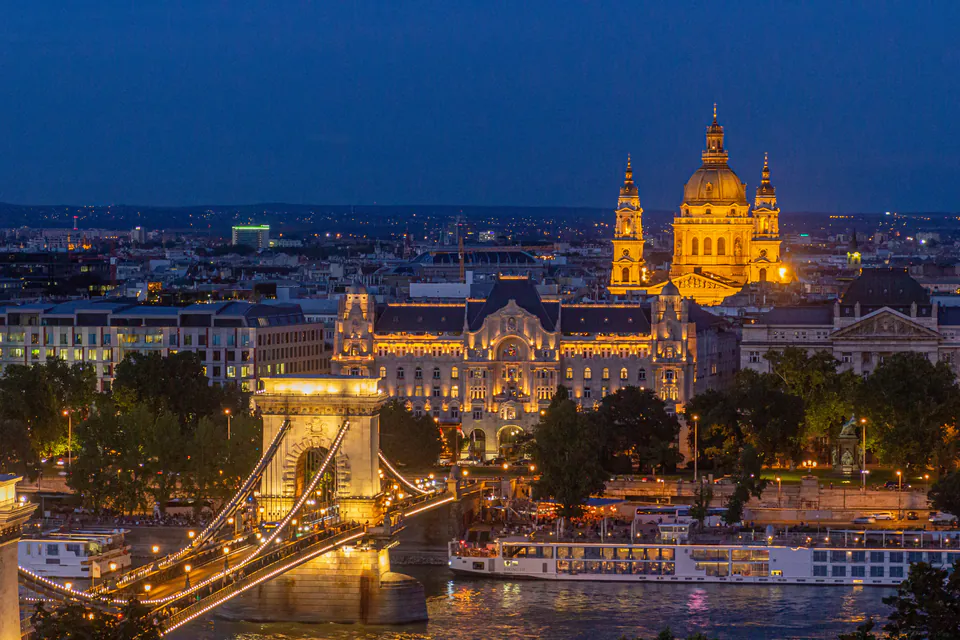
Buda Castle District
Castle Hill sits up there like a crown above the whole city. This UNESCO World Heritage Site isn't just some old buildings - it's where Hungarian royalty lived for centuries, and you can still feel that royal atmosphere when you walk around.
The Royal Palace is huge and impressive with its Baroque style. Kings and queens actually lived here back in the day, starting from the 1200s. The building has been through wars and reconstructions, but now it houses the Hungarian National Gallery and Budapest History Museum. We spent hours in the National Gallery looking at Hungarian art - some of it goes way back to medieval times.
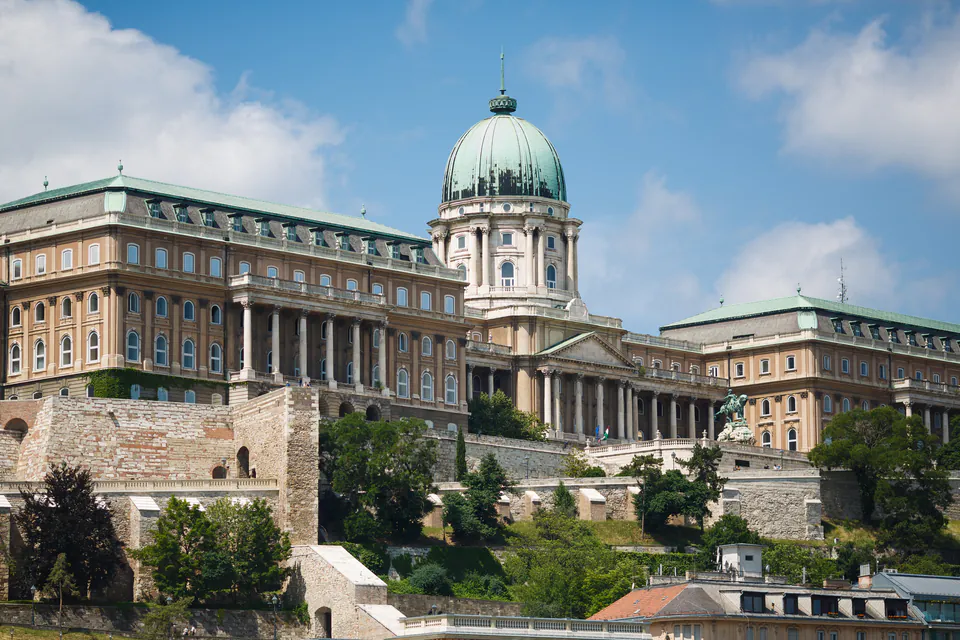
Matthias Church looks like something from a fairy tale with its colorful roof tiles. Officially it's called the Church of Our Lady, and it's seen some major Hungarian moments - royal weddings, coronations, the works. During Ottoman times, it was actually turned into a mosque and then back to a church. The inside is beautiful with medieval stone work and stained glass that makes the light look magical.
Right next to the church is Fisherman's Bastion. Despite looking ancient, this was built around 1900 as a viewing spot, not for defense. The seven towers represent the seven Magyar tribes that founded Hungary. We love coming here for the views - you can see the whole city spread out below you, with the Danube curving through it all. The white stone towers and arches make perfect frames for photos too.
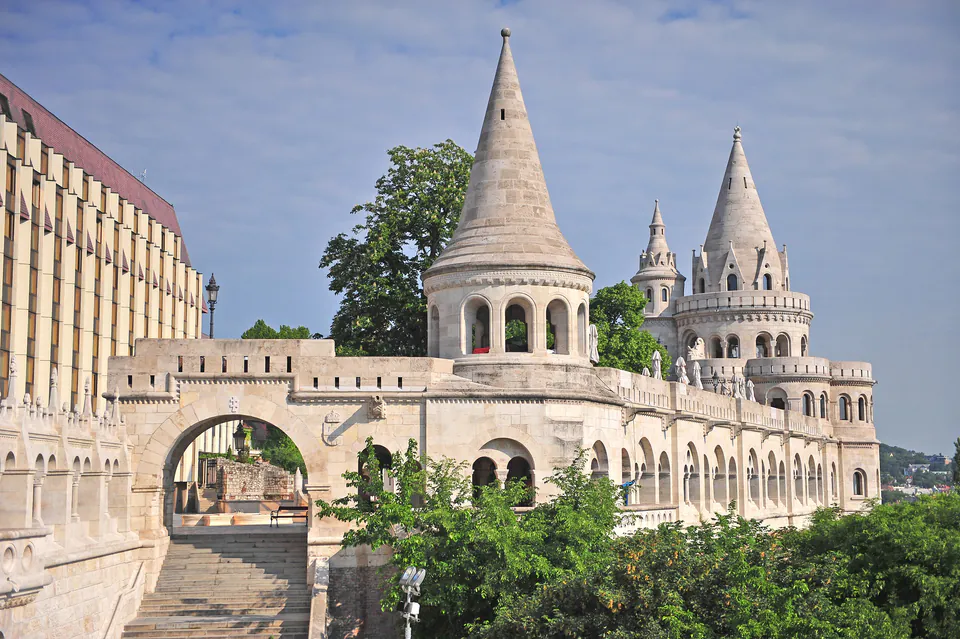
Hungarian Parliament Building
The Parliament Building is probably the most impressive building you'll see in Budapest. It sits right along the Danube on the Pest side and just dominates the whole riverfront. They finished building it in 1902 after 17 years of work, and it was meant to show that Hungary was a serious nation within the Austro-Hungarian Empire.
The design was inspired by London's Houses of Parliament, but this one has its own Hungarian character. The building stretches along the river with tons of spires, and the central dome reaches exactly 96 meters high. That's the same height as St. Stephen's Basilica, which was done on purpose to show balance between government and church power.
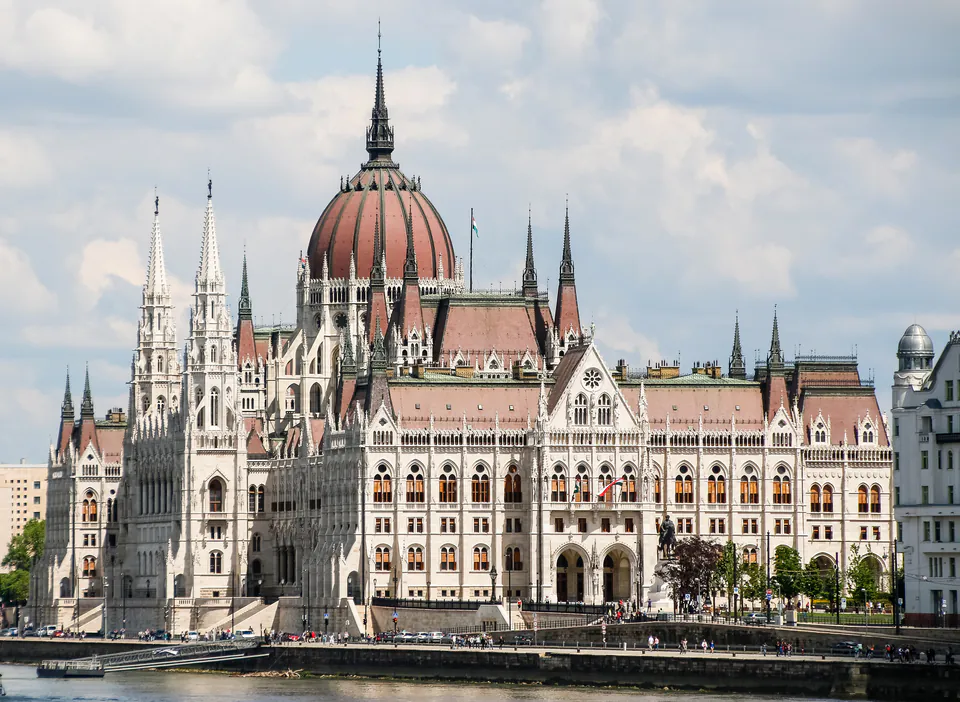
Inside there are 691 rooms, which is just insane. They used about 40 kilograms of gold leaf for decorations and over 50 different types of marble from around the empire. The most important thing they keep here is the Hungarian Crown Jewels, including St. Stephen's Holy Crown. It's in the Dome Hall under heavy security.
We took a guided tour and saw the Grand Staircase with its red carpet and golden ceiling. The Dome Hall where the crown jewels are displayed is really something special. Tours are available in different languages and give you lots of interesting facts about Hungarian politics and how the building survived through monarchy, communism, and now democracy.
Chain Bridge
The Chain Bridge isn't just a way to get from Buda to Pest - it's a symbol of how the city came together. When it opened in 1849, this was the first permanent bridge connecting the two sides. Before this, people had to use boats or wait for winter when the river froze.
English engineer William Tierney Clark designed it, and Scottish engineer Adam Clark supervised the construction. For its time, this suspension bridge technology was pretty cutting-edge. The design with the big stone towers and iron chains became a model for other bridges in the empire.
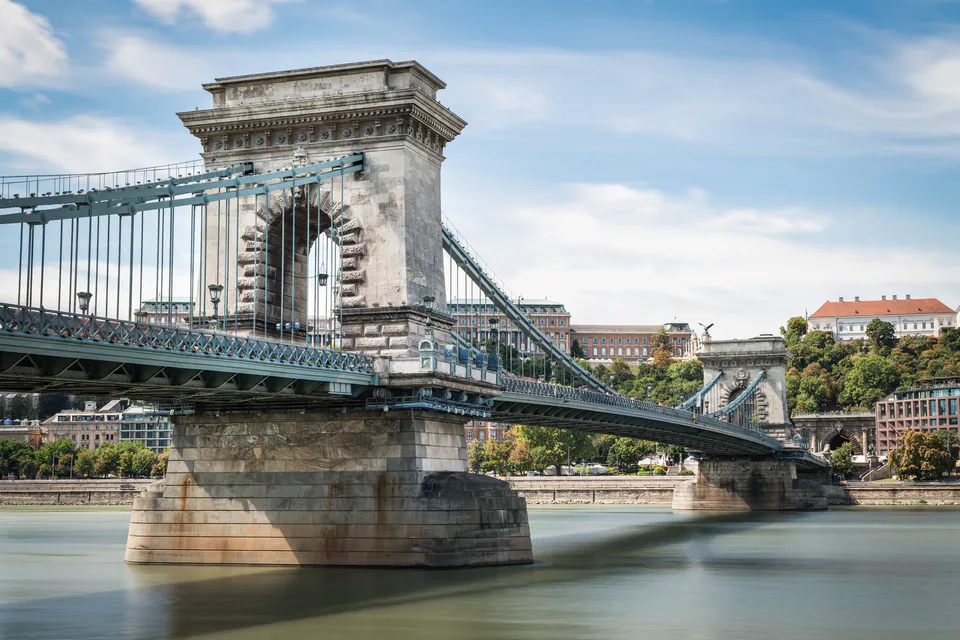
The lion statues at each end are pretty famous. There's this funny local story that says the lions don't have tongues because the sculptor forgot them, but that's not true - the tongues are just hard to see from street level. We always point this out to first-time visitors who've heard the legend.
During World War II, the Germans destroyed all the bridges when they retreated, including this one. But Budapest rebuilt it exactly like the original, and it reopened in 1949, exactly 100 years after the first opening. At night when it's all lit up and reflecting in the water, it's one of the most romantic sights in the city.
St. Stephen's Basilica
St. Stephen's Basilica is the biggest Catholic church in Budapest and really important to Hungarian identity. It's named after Hungary's first king, who brought Christianity to the Magyar tribes and basically founded the Hungarian state. The church took over 50 years to build and finally opened in 1905.
The dome is exactly 96 meters high, same as the Parliament Building. This wasn't an accident - they wanted to show that church and state had equal importance in Hungary. The neoclassical and neo-Renaissance style shows how sophisticated Budapest was in the late 1800s.

Inside, the decorations are incredible - mosaics, paintings, and sculptures by Hungary's best artists. The most sacred thing here is St. Stephen's actual mummified right hand, kept in a golden case. Pilgrims come from all over Central Europe to see it. It connects modern Hungary to its medieval Christian beginnings.
You can go up to the dome by elevator or climb 364 steps if you're feeling energetic. The 360-degree views from up there are amazing - you can see the whole city laid out below with the Danube winding through it. They also have organ concerts here that fill the whole space with incredible music.
Széchenyi Thermal Baths
Széchenyi Baths in City Park is the biggest thermal bath complex in Europe. This place really shows you what Hungarian spa culture is all about - it's not just about relaxation, it's a social thing that goes back to Roman times and continued through the Ottoman period.
The neo-Baroque buildings look really grand and imperial. One of the most famous sights in Budapest is the outdoor pools here, especially in winter when you see old guys playing chess while soaking in the hot water. We discovered this during our first winter visit and couldn't believe people were actually swimming outside when it was snowing!
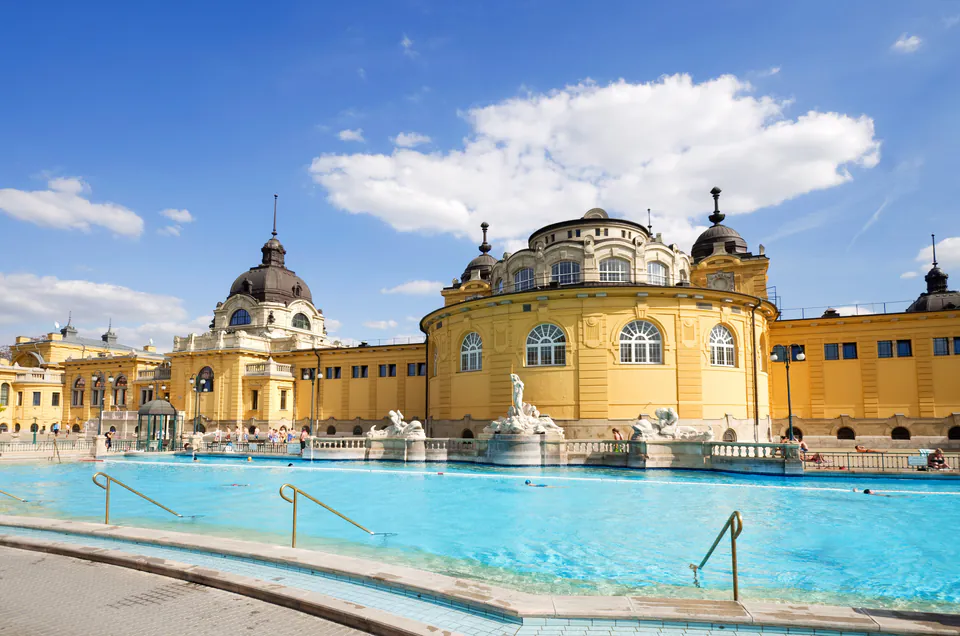
The water comes from deep underground springs and gets heated naturally to 77°C before they cool it down for the pools. There are 15 indoor pools and 3 outdoor ones. The mineral-rich water has sulfates, calcium, magnesium and other stuff that's supposed to help with arthritis and skin problems. But honestly, most locals just come here to hang out with friends and chat about their day.
You can do serious swimming in the sports pools or just relax in the thermal pools. There are saunas and steam rooms too. They added a rooftop spa area recently, but the authentic old-school atmosphere is still there. We always recommend spending at least half a day here.
Gellért Thermal Baths
Gellért Baths at the bottom of Gellért Hill is probably the most beautiful spa in Budapest. It was built between 1912 and 1918 as part of the fancy Hotel Gellért, and the Art Nouveau design is just stunning.
When you walk into the main hall, you feel like you're in some kind of Art Nouveau cathedral. The mosaics, stained glass windows, and ironwork are incredible. The glass roof lets in natural light that bounces off all the decorative elements. This was built during Budapest's Belle Époque period when the city was competing with Vienna and Paris as a cultural center.
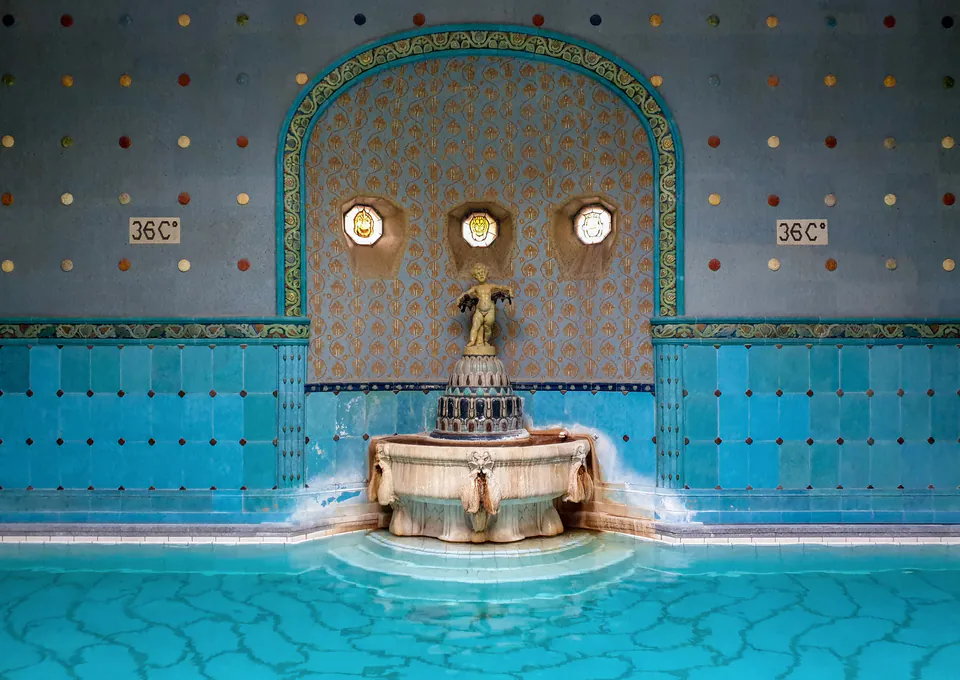
The thermal water comes from springs inside Gellért Hill. People have been using these springs for healing since ancient times, way before this beautiful building was here. The baths have different thermal pools at various temperatures, a regular swimming pool, and a wave pool that creates artificial waves, which is pretty unique.
Since it's connected to Hotel Gellért, the whole experience feels more upscale. We think this is the place to go if you want a more refined spa experience. The combination of the healing waters and the amazing Art Nouveau surroundings makes it really special.
Heroes' Square
Heroes' Square sits at the end of Andrássy Avenue like a giant outdoor stage celebrating Hungarian history. They built it in 1896 for the millennium celebration of when the Magyar tribes settled in this area. It's where Hungary holds its biggest ceremonies and national events.
The Millennium Monument in the center is 36 meters tall with a bronze statue of Archangel Gabriel on top holding St. Stephen's crown and a cross. At the base are statues of the seven chieftains who led the Magyar tribes here over 1,000 years ago. The religious symbolism connects Hungary's earthly history with divine purpose.
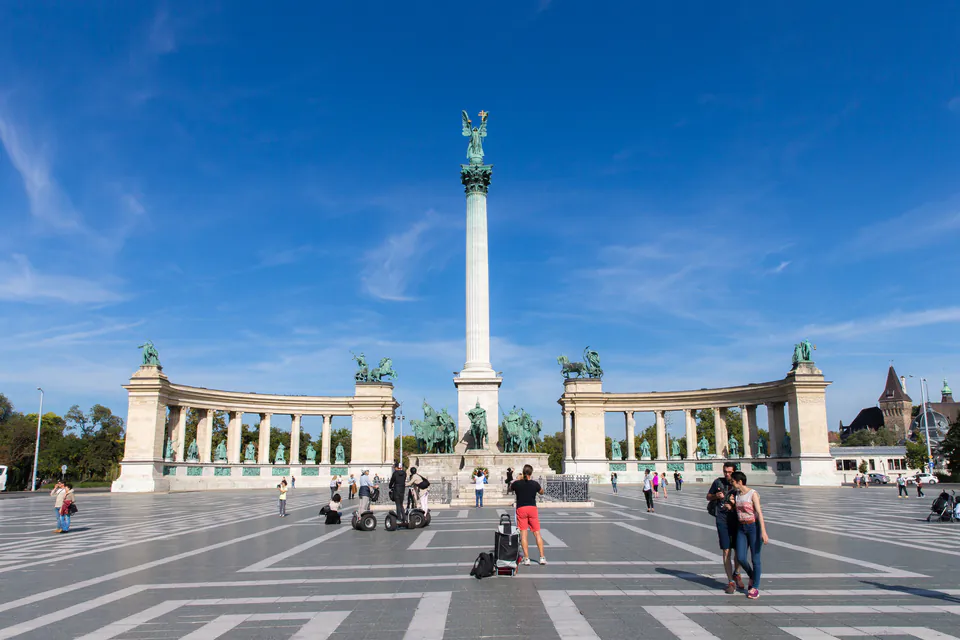
The curved colonnades on both sides create a semicircle with statues of Hungary's most important kings and leaders throughout history. These bronze figures show the continuity of Hungarian leadership through good times and bad, from medieval kings to modern independence fighters.
This square has been the location for some huge political moments in Hungarian history. We remember reading about when they reburied Imre Nagy here in 1989 - he was the prime minister executed after the 1956 revolution. That ceremony basically marked the beginning of Hungary's transition from communism to democracy.
The Museum of Fine Arts and Palace of Art frame the square on both sides. These neoclassical buildings house some of Europe's best art collections, so Heroes' Square isn't just about the past - it's still an active cultural center.
Great Synagogue and Jewish Quarter
The Dohány Street Synagogue in the Jewish Quarter is the biggest synagogue in Europe and second biggest in the world. Built in 1859 when Jewish people had more rights in the Austro-Hungarian Empire, it can hold almost 3,000 people. That gives you an idea of how big and important Budapest's Jewish community was in the 1800s.
The Moorish Revival style with onion domes and geometric patterns was popular for synagogues back then. European Jewish communities wanted architecture that honored their Middle Eastern heritage while fitting into European cities. The size and beauty of this building showed how confident and prosperous Hungarian Jews were before the disasters of the 20th century.
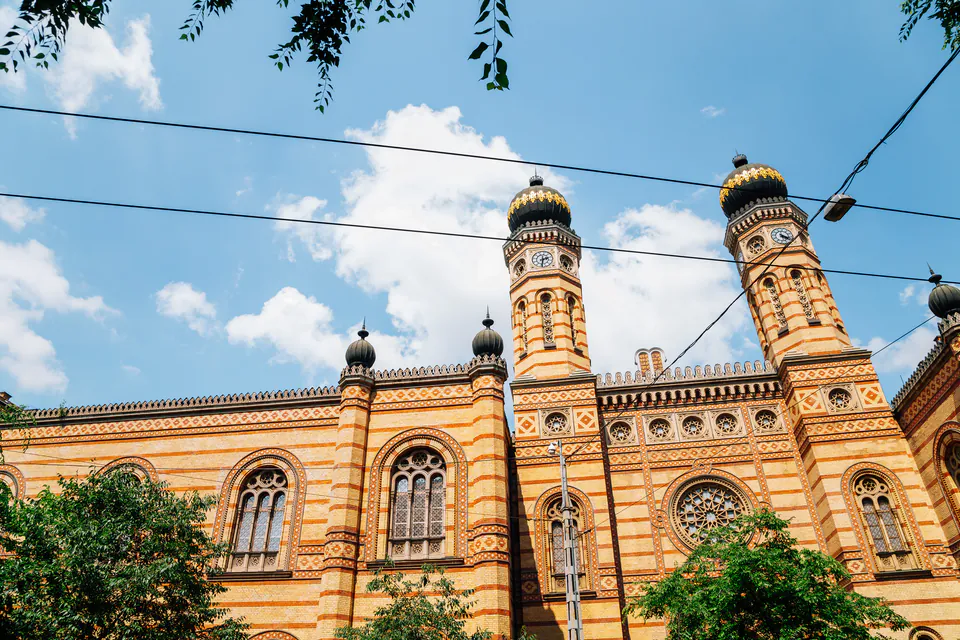
The complex includes more than just the synagogue. There's a Jewish Museum that tells the story of Hungarian Jews through artifacts and personal stories. The Heroes' Temple honors Jewish soldiers who died for Hungary in World War I. The cemetery in the synagogue grounds is a sad reminder of the Holocaust's impact on Budapest's Jewish community.
The Raoul Wallenberg Memorial Park honors the Swedish diplomat who saved thousands of Hungarian Jews during Nazi occupation. The weeping willow memorial tree has Holocaust victims' names on its metal leaves, creating a moving place for remembrance. These memorials make the synagogue not just a religious site but a place of memory that honors both the vibrant Jewish life that existed here and the tragedy that followed.
Margaret Island
Margaret Island sits in the middle of the Danube like a green escape from city life. This 2.5-kilometer island is connected by Margaret Bridge and Árpád Bridge and has been a peaceful retreat for centuries. You can walk, bike, or just relax in the gardens and parks.
The island has medieval history - there was a Dominican convent here where Princess Margaret, King Béla IV's daughter, lived as a nun in the 1200s. You can still see ruins of the medieval convent and a Franciscan church. But now it's mostly about recreation with parks, gardens, and sports facilities.
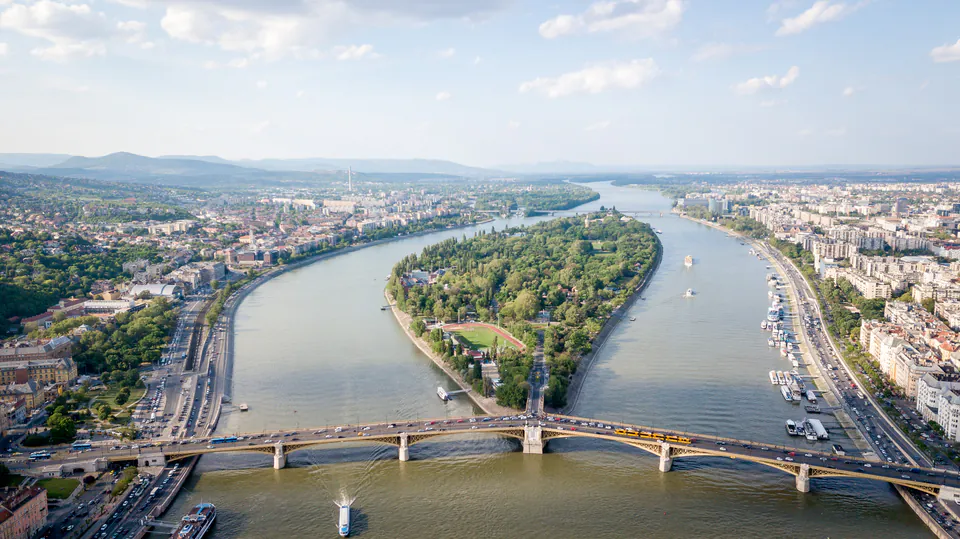
Today the island has the Palatinus Strand swimming complex, tennis courts, a running track, and paths for walking and cycling. The musical fountain does water and light shows with classical music during summer, which draws big crowds. We love jogging here early in the morning when it's quiet and peaceful.
The gardens are really well maintained with different plant species and landscape designs. There's a formal rose garden and more natural woodland areas where birds live. The Japanese Garden is particularly nice for a quiet moment away from the more active parts of the island.